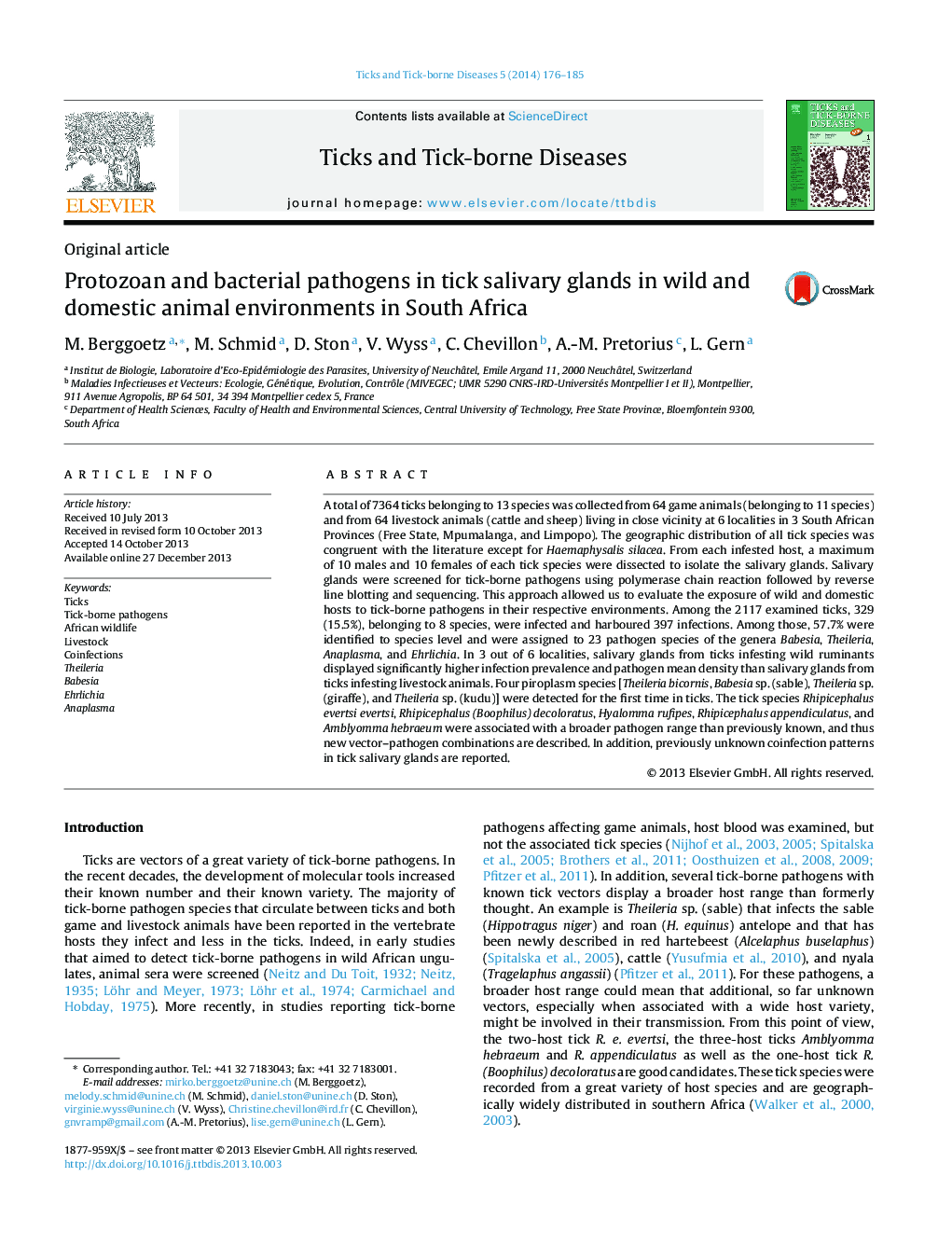| کد مقاله | کد نشریه | سال انتشار | مقاله انگلیسی | نسخه تمام متن |
|---|---|---|---|---|
| 5807173 | 1113109 | 2014 | 10 صفحه PDF | دانلود رایگان |
A total of 7364 ticks belonging to 13 species was collected from 64 game animals (belonging to 11 species) and from 64 livestock animals (cattle and sheep) living in close vicinity at 6 localities in 3 South African Provinces (Free State, Mpumalanga, and Limpopo). The geographic distribution of all tick species was congruent with the literature except for Haemaphysalis silacea. From each infested host, a maximum of 10 males and 10 females of each tick species were dissected to isolate the salivary glands. Salivary glands were screened for tick-borne pathogens using polymerase chain reaction followed by reverse line blotting and sequencing. This approach allowed us to evaluate the exposure of wild and domestic hosts to tick-borne pathogens in their respective environments. Among the 2117 examined ticks, 329 (15.5%), belonging to 8 species, were infected and harboured 397 infections. Among those, 57.7% were identified to species level and were assigned to 23 pathogen species of the genera Babesia, Theileria, Anaplasma, and Ehrlichia. In 3 out of 6 localities, salivary glands from ticks infesting wild ruminants displayed significantly higher infection prevalence and pathogen mean density than salivary glands from ticks infesting livestock animals. Four piroplasm species [Theileria bicornis, Babesia sp. (sable), Theileria sp. (giraffe), and Theileria sp. (kudu)] were detected for the first time in ticks. The tick species Rhipicephalus evertsi evertsi, Rhipicephalus (Boophilus) decoloratus, Hyalomma rufipes, Rhipicephalus appendiculatus, and Amblyomma hebraeum were associated with a broader pathogen range than previously known, and thus new vector-pathogen combinations are described. In addition, previously unknown coinfection patterns in tick salivary glands are reported.
Journal: Ticks and Tick-borne Diseases - Volume 5, Issue 2, March 2014, Pages 176-185
